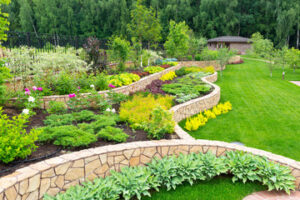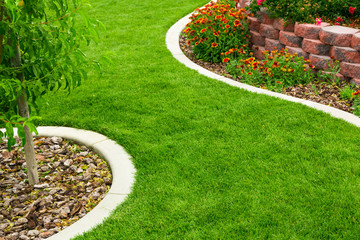Landscaping Techniques
When it comes to landscaping, there are a lot of techniques that can be used to improve your property. You can choose to use trees or shrubs, and you can also mulch your garden to reduce watering. Other factors that you should consider when planning your lawn or landscaping project include security and microclimates.

Mulching is a technique used to reduce water use in landscaping. It is a popular practice that can benefit both individual plants and the entire landscape.
In addition to its aesthetic qualities, mulch can improve the structure of the soil. This includes preventing erosion and compaction. Additionally, mulch helps prevent weeds from growing. Furthermore, mulch helps improve the temperature and moisture content of the soil.
Landscape mulches have been around for a long time. Many agricultural and forestry wastes are suitable for mulching. The best mulch is determined by the site conditions and the preferred irrigation method.
Mulching can also be used to add color. You can choose from a variety of colors to fit your garden or landscape. However, you should avoid using fertilizer or pesticides in your mulch. Organic mulch can also provide additional nutrients for your plants.
Mulching can be used in many different areas of your landscape, such as flower beds, walkways, and planters. Using mulch in these areas can help you save a lot of money and energy on your water bill.
Mulching also reduces the amount of runoff during rainfall. Since mulch blocks sunlight, it reduces the risk of evaporation. Also, mulch acts as an insulator and prevents soil from drying out. During the colder months, mulch can keep your plants’ roots warm.
While mulch can be expensive in the initial setup, it will pay off in the end. For example, a golf course may save a lot of money if they install a mulched tee box area. Another benefit of mulching is that it can protect your trees from being damaged by winter winds.
Choosing the right kind of mulch for your landscape is an important part of conserving water. A variety of materials, including grass, straw, and wood chips, can be used as mulch. Some nurseries sell large quantities of mulch in cubic yards.
Besides saving you money on water and energy costs, mulching can improve the overall look and function of your landscape. Furthermore, mulching can reduce evaporation by up to 70%. Depending on the location, mulch can be beneficial to individual plants as well.
During the winter months, drifting snow can be a nuisance. But there is a way to prevent the buildup of drifts. The erection of a snow fence can be a valuable solution.
Snow fences are usually installed to keep snow from building up on driveways and roads. However, they can also be used to guide drifting snow to specific locations. When designing a snow fence, the barrier must be designed for the wind direction. It must also be well-positioned. Depending on the site, it may need to be a few hundred feet back from the road.
There are two main types of snow fences. The first is a simple slatted barrier, and the second is a living snow fence. Both can effectively capture snow, but a living fence can be a permanent alternative.
A living snow fence is a landscape structure that prevents snow from accumulating on roadways or reaching waterways. This will give motorists improved winter driving conditions and help to improve wildlife habitats.
A living snow fence takes time to reach an effective height. This is why it is generally recommended that it be planted well back from the area it is intended to protect. Ideally, the distance between the fence and the protected area should be 100 to 150 feet.
While a slatted snow fence is the most common and effective, a living snow fence can be the most beneficial solution for some locations. The main benefit is that a living fence will provide a natural habitat for wildlife.
Besides providing an excellent shelter for wildlife, a living snow fence can enhance the look of a property. Living barriers also help to reduce soil erosion by wind.
To make a living snow fence work effectively, it needs to be planted well back from the area it is protecting. Also, it is important to fertilize and care for plants. Depending on the size of the plant, it may need to be pruned every year.
Buildings are another place that can be used to minimize drifting. To prevent drifting around a building, it is often necessary to raise it on stilts.




